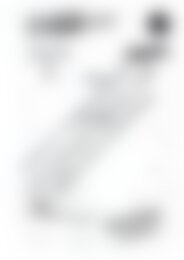W8490PR-Learn from Home Workbook 3
Create successful ePaper yourself
Turn your PDF publications into a flip-book with our unique Google optimized e-Paper software.
Report 1<br />
The dragonfly<br />
The dragonfly is a flying insect. It gets its name <strong>from</strong> its wings and body<br />
shape—it looks like a tiny flying dragon.<br />
Like all insects, it has three main body parts—the head, the thorax<br />
and the abdomen. On the head are two large eyes which allow the<br />
dragonfly to see very well. Two pairs of large wings and three pairs of<br />
legs are attached to the thorax. A dragonfly flies very fast and skillfully. It<br />
can fly backwards, loop-the-loop and hover. The abdomen is long and<br />
thin and contains the gut and male or female parts.<br />
A dragonfly is often brightly coloured. Its body may be blue, red or<br />
green with white, yellow or black markings.<br />
It is most likely to be seen near water. A dragonfly lays its eggs in or<br />
around damp places such as ponds, lakes, swamps and rivers. Some<br />
even lay their eggs in rain puddles.<br />
An adult dragonfly uses its strong jaws and sharp teeth for crunching<br />
and eating other flying insects such as mosquitoes, midges, butterflies<br />
and moths. Its enemies are birds, frogs, spiders and larger dragonflies.<br />
The biggest dragonfly can have a wingspan of about 16 cm. The<br />
smallest can be less than 2 cm.<br />
Although the dragonfly has a scary sounding name, it does not bite or<br />
sting people. I like the way its colours glisten in the sunlight as it hovers<br />
over the water.<br />
Viewing sample<br />
Prim-Ed Publishing www.prim-ed.com 978-1-912760-63-3 <strong>Learn</strong> <strong>from</strong> <strong>Home</strong> <strong>Workbook</strong> 3 89


















